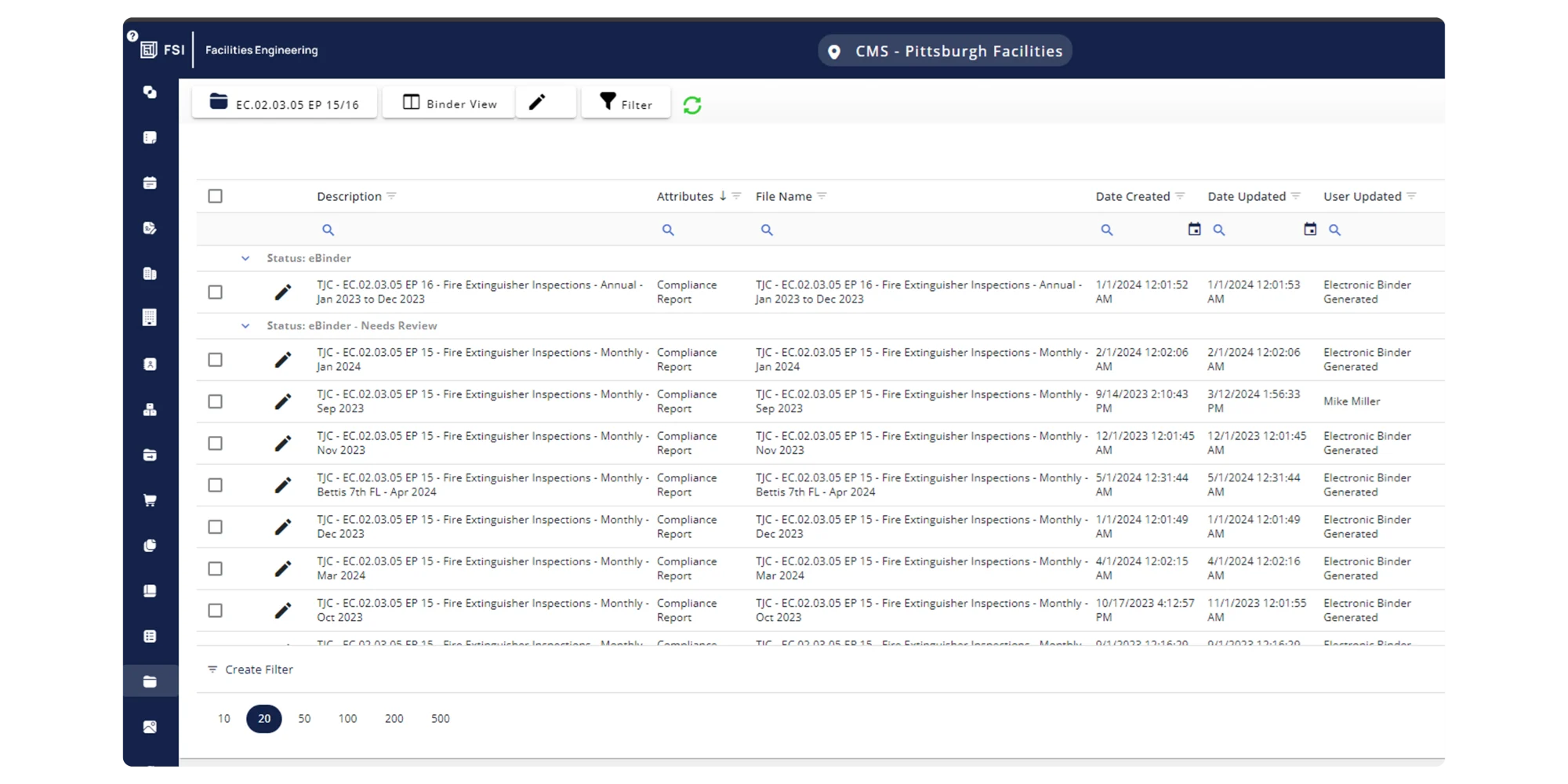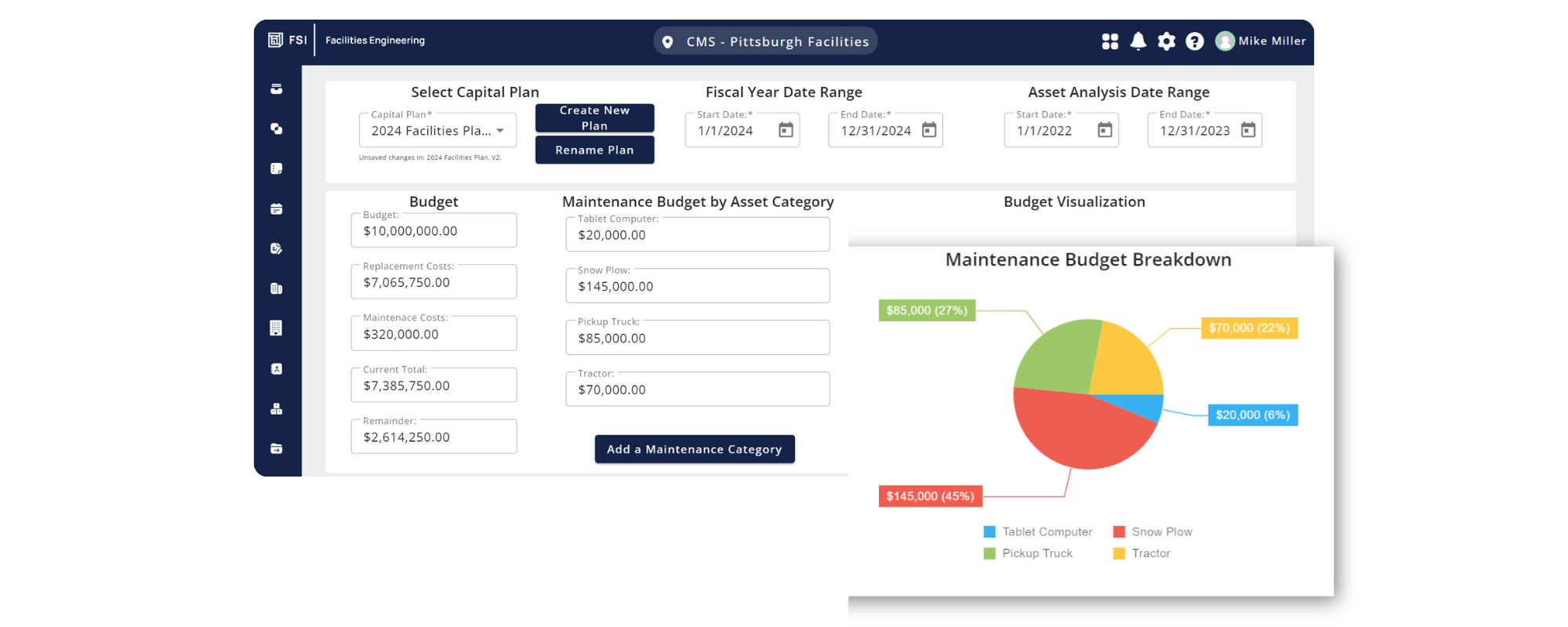From improving operational efficiency to driving better patient outcomes, the benefits of a healthcare-specific CMMS/EAM software reach every corner of the hospital. However, not all computerized maintenance management systems (CMMS) are built the same, especially when it comes to those used to manage facilities and medical assets in healthcare.
This also means that searching for a healthcare CMMS software that works for your specific needs and requirements can be challenging. Whether looking for the first time or seeking a solution that meets your current dynamics, read our five must-haves for choosing a healthcare CMMS software.
Leveraging Compliance-ready Functionality
Using CMMS software can provide benefits to managing what is required for organizations to stay in compliance. There are multiple agencies that have control over measuring the condition of facilities and assets within a hospital.
Whether surveyed by The Joint Commission, DNV, or other regulatory authority, the CMMS will require a record for various facilities and medical asset performance and compliance, including:
- Accurate inventory of facilities and medical assets
- Maintenance procedures for life safety, high-risk, and other assets
- Documentation for scheduled inspection, testing, and maintenance
Within a CMMS purpose-built for healthcare, the software will handle most of this record keeping and tracking. This includes everything from maintaining an accurate inventory of assets and supplies, linking procedures to assets, and ensuring compliance for ongoing scheduled maintenance.

Simplifying the tracking of maintenance activities and inventory by using one system across facilities and medical asset management can offer many benefits. In addition, it can be helpful with organizing and maintaining standardized compliance records.
In doing so, the CMMS then serves as the single source of truth for all records related to what’s required for compliance reporting. For more advanced healthcare CMMS software, this means it can be organized and displayed in ways that may be needed for this reporting. This may include organizing based on modality or other attributes.
Informing Data-driven Decisions with Reporting
Many healthcare organizations today don’t have problems with creating data, but they often face issues with having the tools and resources to pull insights. After all, isolating any trends or patterns are where Facilities and HTM teams get the most value by helping their departments make key decisions to inform everything from compliance to how to best leverage staffing and other resources.
Within CMMS/EAM software solutions, there are different types of reporting and analytics available to organizations. Some will provide a basic table with information about what happened and where. Others will connect data points within this information to provide key trends, helping to inform what needs to happen and why.
Multiple layers of data visibility and reporting helps facilities and asset management teams see what’s happening – and why.

For instance, in a healthcare-specific CMMS, teams can look at data in a few ways. This may include visualizing data related to resourcing, like comparing technician availability versus the hours recorded on work orders, to see any trends in productivity.
It could also include looking at assets procedures to identify where failures may be happening. This could indicate whether there are bigger problems occurring with certain manufacturers, models, and asset categories.
This level of detail can help:
- Inform ongoing preventative maintenance strategies
- Improve the use of budget
- Inform how to schedule technicians and use their time
- Build team morale
Building a Single Source of Truth with Integrations
Nearly 40% of organizations indicate integration potential as one of the top things they look at when choosing software according to recent data from Gartner. And, for your CMMS selection, it’s no different.
Interoperable healthcare CMMS software that can integrate with systems already within the organization can help ensure data transparency and flow. The result? A single source of truth for all data.
This full picture can be beneficial to team leaders. It gives a cohesive view of what’s happening across locations and assets. And, it will mean that team members have the required information they need to be successful at their jobs. Specifically for healthcare, key areas for interoperability between the CMMS and other systems may include:
- Materials
- Testing equipment
- Real-time location system or RTLS
- Timekeeping
- Security
- Single Sign On
For instance, an integration with a vendor like PartsSource makes it easy for personnel to order parts and materials as part of their work order workflow. With the integration, it takes just a few clicks to order new items. And, bonus – it’s all tracked within the CMMS solution to get essential insight into supply chain management.
Accessing this data in the CMMS can be useful to understand the costs and resources required at the asset level. It can also inform more key decisions related to capital planning and ongoing investments.
Supporting the Capital Planning Process
Market dynamics – like increased uncertainty and tightening resources – have made capital planning a bigger priority than ever for healthcare organizations. Capital planning is core to financial planning for healthcare organizations. For many, these shifting dynamics have served as a reason to move to a different approach to this practice.
In the past, many organizations would use a committee approach to see where budget was needed to maintain and extend the life of facilities or medical assets. Often, this meant the loudest voice in the room would get the funding required, because the data to inform decisions wouldn’t be available or easy to analyze.
Healthcare CMMS software has evolved in recent years to include functionality related to improving the capital planning process. This has helped healthcare organizations focus on putting money where it matters most and can be best used to prevent future reactive issues, as well as optimize budget spend.

Within the CMMS, existing information and data can help inform decision making. This can include key data points like:
- Lifecycle information, such as date of installation, life expectancy/end of life, and replacement costs
- Maintenance costs, including labor hours, materials, and service contracts
- Condition assessment, including data related to current physical condition of the asset and the associated technology
Using this information can inform capital plans. This gives team members visibility into key pieces of data and operations, helping to better inform asset replacement throughout the capital planning process.
Optimizing Efficiency for Users
Healthcare CMMS/EAM software can be powerful for teams. Seeing what's happening across facilities and medical asset management can give insight into scheduled and unscheduled maintenance activities. This helps to inform overall operations regarding compliance requirements, capital planning, and even resource and budget allocation.
A CMMS offers even more benefits when it is used by both the facilities and HTM/biomed teams. This wide-scale adoption happens when teams find that standardized operations make their day-to-day easier, as everyone works with the same tools and goals.
This includes how software is accessed, such as by using cloud-based or on-premise servers. In recent years, CMMS software operating on redundant cloud-based servers has adapted to meet the specific needs of these teams and increases overall uptime.
For instance, healthcare teams often struggle with access to their CMMS via WiFi/Intranet in key areas of the hospital. This means they need mobile solutions that can operate without a connection. Once in an area with a strong signal, they can relay any updates made in the system via tablets or smart phones.
This is just one example of how efficiency gains can help drive user adoption. Others to consider include:
- Limited clicks to get to the required screens to complete the assigned task
- Standardized data inputs to simplify the data entry process
- Key automations to trigger follow up workflows
- Report and insights automation to give essential visibility into operations and compliance
Every organization has its own dynamics to consider when evaluating the ideal healthcare CMMS software. However, given the challenges for today’s hospitals and healthcare systems, these five elements – data integrity, compliance and reporting, integrations, capital planning, and efficiency – continue to stand the test of time. Focusing on these areas helps leaders find the CMMS software that supports their requirements while preparing them for what the future may bring.
Interested in seeing FSI's healthcare CMMS software in action? Book a demo with our team.